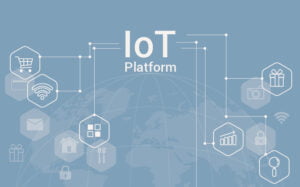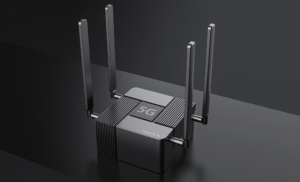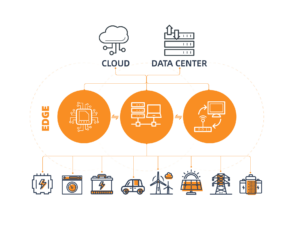As IoT (Internet of Things) rapidly develops, edge computing platforms have become a key technology to address issues such as data processing latency, bandwidth limitations, and privacy security. An effective edge IoT platform enables local data processing and real-time response by pushing computing capabilities closer to data sources. In this article, we conduct a comprehensive IoT platform comparison, focusing on ten leading edge IoT solutions—covering technical parameters, hardware requirements, features, and application areas—to help you choose the most suitable platform for your scenario.
Edge IoT Platform Comparison Table - Technical Parameters and Hardware Requirements
First, we compare the key technical parameters and hardware requirements of these ten edge IoT platforms in the table below.
Table 1: Technical Parameters and Hardware Requirements Comparison of Edge IoT Platforms
| Platform Name | Development Language | OS Support | Hardware Requirements | Protocol Support | Latest Version (as of Oct 2023) |
|---|---|---|---|---|---|
| EdgeX Foundry | Go, Java, C/C++ | Linux, Windows, macOS | x86, ARM | MQTT, HTTP, Modbus, BACnet | 2.0 |
| KubeEdge | Go | Linux | x86, ARM | MQTT, HTTP | 1.9 |
| Eclipse Kura | Java | Linux, Windows | x86, ARM | MQTT, CoAP, Modbus | 5.0 |
| Fledge | C, Python | Linux | x86, ARM | MQTT, HTTP, OPC-UA | 1.8 |
| ThingsBoard Edge | Java | Linux, Windows, macOS | x86, ARM | MQTT, HTTP, CoAP | 3.4 |
| Baetyl | Go | Linux, Windows | x86, ARM | MQTT, HTTP | 2.3 |
| Mainflux | Go | Linux, Windows, macOS | x86, ARM | MQTT, HTTP, CoAP, WebSocket | 1.4 |
| EMQ X Edge | Erlang | Linux, Windows, macOS | x86, ARM | MQTT, CoAP, LwM2M | 5.0 |
| Node-RED | JavaScript (Node.js) | Linux, Windows, macOS | x86, ARM, Raspberry Pi | MQTT, HTTP, WebSocket | 3.0 |
| Azure IoT Edge | Multi-language support | Linux, Windows | x86, ARM | MQTT, AMQP, HTTP | 1.2 |
As the table shows, most of these platforms support mainstream operating systems and hardware architectures, such as x86 and ARM, meeting the deployment needs for different scenarios. Additionally, they all support various IoT protocols, facilitating communication with a wide range of devices.
Top 10 IoT Platforms for Edge Computing: Overview & Use Cases
Next, we will introduce each edge IoT platform in detail, covering their features, hardware requirements, application areas, etc.
1. EdgeX Foundry
Project Overview
EdgeX Foundry is one of the leading edge IoT platforms designed for real-time device data processing and modular deployment. Foundry is an open-source edge computing platform led by the Linux Foundation, aiming to build an interoperable edge computing ecosystem. It adopts a microservices architecture, making it easier to extend and integrate various devices and applications.
Main Features
- Microservices architecture: Independent deployment of functional modules, improving system flexibility.
- Device service layer: Supports various southbound protocols like Modbus, BACnet, etc.
- Application service layer: Provides data filtering, format conversion, and rule engines.
- Pluggability: Components can be replaced or upgraded as needed.
Hardware Requirements
- Processor: Supports x86 or ARM architectures.
- Memory: At least 1GB of RAM.
- Storage: At least 1GB of available space.
- Operating System: Linux, Windows, or macOS.
Use Cases
- Industrial automation: Device interconnection and data collection.
- Smart cities: Environmental monitoring and public facility management.
- Retail: Customer behavior analysis and inventory management.
Here’s the continuation of the translation, maintaining the original Markdown format:
2. KubeEdge
Project Overview
KubeEdge is an open-source project incubated by the Cloud Native Computing Foundation (CNCF), extending Kubernetes' container orchestration capabilities to the edge. It achieves seamless collaboration between the cloud and edge for unified management. In the scope of this IoT platform comparison, KubeEdge offers a unique advantage in Kubernetes-native cloud-edge collaboration.
Main Features
- Cloud-edge collaboration: Unified management of cloud and edge resources.
- Offline autonomy: Edge nodes can operate independently in offline mode.
- Device management: Supports device access and control via MQTT protocol.
- Resource optimization: Optimized for resource-constrained edge devices.
Hardware Requirements
- Processor: Supports x86 or ARM architectures.
- Memory: At least 512MB of RAM.
- Storage: At least 500MB of available space.
- Operating System: Linux.
Use Cases
- Smart manufacturing: Production line monitoring and quality control.
- Video surveillance: Real-time video stream processing and analysis.
- IoT: Large-scale device management and data processing.
3. Eclipse Kura
Project Overview
Eclipse Kura is an open-source IoT gateway framework from the Eclipse Foundation, based on Java/OSGi technology. It provides abstraction for industrial-grade IoT gateway functions, simplifying development and deployment processes.
Main Features
- Cross-platform support: Can run on various hardware platforms, including Raspberry Pi.
- Rich interfaces: Supports hardware interfaces like serial ports, GPIO, I2C, SPI.
- Remote management: Provides a web-based management console.
- Secure communication: Supports SSL/TLS encryption and VPN connections.
Hardware Requirements
- Processor: Supports x86 or ARM architectures.
- Memory: At least 256MB of RAM.
- Storage: At least 256MB of available space.
- Operating System: Linux, Windows.
Use Cases
- Industrial automation: Device data collection and control.
- Logistics: Vehicle tracking and cargo monitoring.
- Environmental monitoring: Sensor data collection and analysis.
4. Fledge
Project Overview
Fledge is an open-source project under LF Edge, focusing on edge computing for industrial IoT (IIoT). It aims to facilitate data transmission and processing from sensors to the cloud, supporting various industrial protocols and plugins.
Main Features
- Plugin architecture: Supports southbound (device) and northbound (cloud) plugins.
- Data buffering: Caches data when the network is interrupted and uploads when restored.
- Machine learning support: Can run AI models on the edge.
- High compatibility: Integrates with mainstream cloud services and databases.
Hardware Requirements
- Processor: Supports x86 or ARM architectures.
- Memory: At least 1GB of RAM.
- Storage: At least 1GB of available space.
- Operating System: Linux.
Use Cases
- Manufacturing: Predictive maintenance and energy management.
- Energy: Oil and gas monitoring, grid management.
- Utilities: Water treatment, waste management.
5. ThingsBoard Edge
Project Overview
ThingsBoard Edge is the edge extension version of the ThingsBoard IoT platform, providing local data processing and device management. It supports rule engines and data visualization on the edge.
Main Features
- Rule engine: Filters and handles alerts on the edge.
- Data synchronization: Automatically syncs data between edge and cloud.
- Multi-tenancy: Suitable for complex deployments in large enterprises.
- Security mechanisms: Device authentication and data encryption.
Hardware Requirements
- Processor: Supports x86 or ARM architectures.
- Memory: At least 1GB of RAM.
- Storage: At least 1GB of available space.
- Operating System: Linux, Windows, macOS.
Use Cases
- Energy management: Real-time monitoring and optimization of energy consumption.
- Building automation: Device control and environmental monitoring in smart buildings.
- Agri-tech: Crop monitoring and irrigation control.
Continuing with the translation:
6. Baetyl
Project Overview
Baetyl is an open-source edge computing platform from Baidu, designed to implement a cloud-edge collaborative computing architecture. It supports deploying and managing containerized applications and function computing on edge devices, providing unified management and data processing capabilities for cloud and edge.
Main Features
- Cloud-edge collaboration: Seamless integration with the cloud for unified application deployment and management.
- Multiple computing modes: Supports various computing frameworks such as containers and functions.
- Plugin architecture: Extends functionality via plugins, such as device management and protocol conversion.
- Lightweight: Suitable for resource-constrained edge devices.
Hardware Requirements
- Processor: Supports x86 or ARM architectures.
- Memory: At least 256MB of RAM.
- Storage: At least 256MB of available space.
- Operating System: Linux, Windows.
Use Cases
- Smart home: Device interconnection and local control.
- Connected vehicles: Local processing and real-time analysis of vehicle data.
- Smart cities: Edge-side processing of traffic, environmental, and other data.
7. Mainflux
Project Overview
Mainflux is a highly scalable and secure open-source IoT platform, supporting both edge and cloud deployment. It provides device connectivity, management, and data aggregation functions and uses a microservices architecture for easy extension and integration.
Main Features
- Multi-protocol support: Compatible with protocols like MQTT, HTTP, CoAP, and WebSocket.
- High performance: Developed in Go, enabling high concurrency processing.
- Security authentication: Supports authentication and authorization for devices and users.
- Scalability: Built on a microservices architecture, making it easy to expand and maintain.
Hardware Requirements
- Processor: Supports x86 or ARM architectures.
- Memory: At least 512MB of RAM.
- Storage: At least 500MB of available space.
- Operating System: Linux, Windows, macOS.
Use Cases
- Industrial IoT: Machine status monitoring and remote control.
- Smart agriculture: Environmental data collection and analysis.
- Asset tracking: Real-time location and status monitoring.
8. EMQ X Edge
Project Overview
EMQ X Edge is an open-source IoT edge message server provided by EMQ, optimized for edge scenarios. It supports high-concurrency connections and multiple IoT protocols, making it suitable for message collection, processing, and routing on the edge.
Main Features
- High-performance message engine: Supports millions of concurrent connections.
- Multi-protocol support: Compatible with MQTT, CoAP, LwM2M, and other protocols.
- Rule engine: Supports message filtering, transformation, and forwarding.
- Edge autonomy: Can locally cache and process data when the network is down.
Hardware Requirements
- Processor: Supports x86 or ARM architectures.
- Memory: At least 256MB of RAM.
- Storage: At least 200MB of available space.
- Operating System: Linux, Windows, macOS.
Use Cases
- Smart manufacturing: Real-time data collection and production control.
- Connected vehicles: Vehicle status monitoring and remote diagnostics.
- Energy management: Grid monitoring and load regulation.
9. Node-RED
Project Overview
Node-RED is a flow-based programming tool primarily used for connecting hardware devices, APIs, and online services. It offers a browser-based visual editor, allowing users to create data flows by dragging and dropping nodes.
Main Features
- Easy to use: Visual programming lowers the development threshold.
- Rich node library: Pre-built nodes supporting various functions and extensions.
- Real-time debugging: Instantly view and modify data flows.
- Cross-platform: Runs on multiple devices, including resource-constrained hardware.
Hardware Requirements
- Processor: Supports x86, ARM, or other architectures.
- Memory: At least 128MB of RAM.
- Storage: At least 100MB of available space.
- Operating System: Linux, Windows, macOS, Raspberry Pi, etc.
Use Cases
- Rapid prototyping: Quick build and test for IoT applications.
- Smart home: Device interconnection and automation control.
- Educational tools: IoT and programming teaching tools.
10. Azure IoT Edge
Project Overview
Azure IoT Edge is Microsoft's edge computing platform, allowing users to deploy Azure cloud services and custom logic to edge devices. It supports running AI, Azure services, and custom applications on edge devices.
Main Features
- Modular architecture: Container-based modular design for easy deployment and management.
- Cloud management: Remote management of devices and modules via Azure IoT Hub.
- AI support: Capable of running machine learning models on edge devices.
- Security: Offers device authentication, data encryption, and secure boot.
Hardware Requirements
- Processor: Supports x86 or ARM architectures.
- Memory: At least 128MB of RAM (depends on module requirements).
- Storage: At least 128MB of available space.
- Operating System: Linux, Windows.
Use Cases
- Retail: Local inventory management and customer behavior analysis.
- Healthcare: Data processing and anomaly detection for medical devices.
- Manufacturing: Real-time monitoring and quality control of production lines.
Feature Comparison of Leading Edge IoT Platforms
Based on the detailed introductions of the ten edge IoT platforms above, we can summarize the following insights:
- Extensive protocol support: Most platforms support mainstream IoT protocols like MQTT, HTTP, and CoAP, facilitating device connectivity and data transmission.
- Flexible architectures: Platforms with microservices or plugin-based architectures are more flexible, allowing for easier extension and feature customization.
- Resource usage differences: Lightweight platforms like Node-RED and Baetyl are more suitable for resource-constrained edge devices.
- Cloud-edge collaboration: Platforms such as KubeEdge, Baetyl, and Azure IoT Edge emphasize cloud-edge collaboration, making them ideal for scenarios requiring unified management and deployment.
- Security: Security mechanisms are critical in edge IoT platforms, and most platforms offer features like device authentication and data encryption.
Choosing the Right Edge IoT Platform by Industry Use Case
Choosing the right edge IoT platform is crucial depending on the application area. Here are some recommendations:
- Industrial automation and manufacturing: Platforms like EdgeX Foundry, KubeEdge, Fledge, and EMQ X Edge are well-suited for industrial environments due to their high performance and protocol support.
- Smart home and smart cities: Platforms like Baetyl, Node-RED, and Eclipse Kura are user-friendly and flexible, making them ideal for these fields.
- Connected vehicles and transportation: Platforms like EMQ X Edge and Baetyl handle large volumes of real-time data, making them suitable for vehicle and traffic data processing.
- Energy and utilities: Platforms like Fledge and ThingsBoard Edge offer data synchronization and rule engines, making them ideal for energy management and utility monitoring.
- Retail and healthcare: Azure IoT Edge, with its deep integration with cloud services, is suited for fields requiring strong cloud support.
Edge computing is becoming an essential direction for IoT development, being adopted in more industries and fields. Choosing the right edge IoT platform requires considering factors such as hardware conditions, functional requirements, protocol support, and security. We hope this comprehensive comparison and detailed analysis provide valuable guidance for your selection.
Frequently Asked Questions
Q1: What is the best edge IoT platform for industrial applications?
EdgeX Foundry, EMQ X Edge, and Fledge are strong candidates thanks to their protocol support and industrial-grade performance.
Q2: How to choose between open-source and commercial IoT platforms?
Our open-source IoT platform comparison shows open-source tools offer flexibility and cost-effectiveness, while commercial ones often include enterprise-grade support.
Q3: What protocols do the top 10 IoT platforms support?
Most platforms support MQTT, HTTP, and CoAP. Some like EdgeX Foundry and Kura support Modbus, BACnet, and industrial protocols.
Q4: Which edge computing platform supports cloud integration?
Platforms like KubeEdge, Azure IoT Edge, and Baetyl are designed with cloud-edge collaboration in mind.
Recommended Reading
If you're exploring edge IoT platforms, you may also find these resources helpful:
- EdgeX Foundry: How the Open-Source Edge Computing Platform Accelerates IoT System Development
- KubeEdge Guide Part 1: The Perfect Integration of Edge Computing and Kubernetes
- KubeEdge Guide Part 2: In-Depth Analysis of KubeEdge Deployment and Practices
- KubeEdge Guide Part 3: KubeEdge Ecosystem and Future Prospects
- Choosing the Best Open-Source IoT Platform for Development: A Comprehensive Guide



